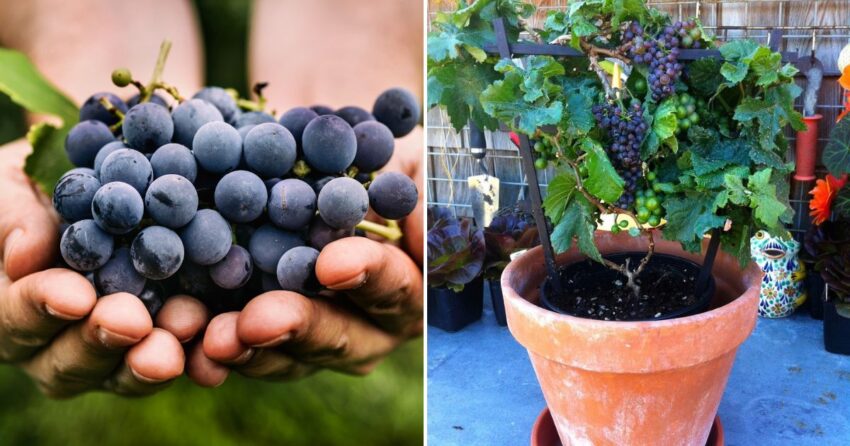Have you ever dreamed of plucking fresh, juicy grapes right from your backyard? Believe it or not, growing grapes at home is more attainable than you might think. With a little planning, patience, and care, you can transform your garden into a fruitful vineyard. Let’s dive into the process of growing grapes at home, step-by-step.
Choosing the Right Grape Variety
First things first, selecting the right grape variety is crucial. Grapes come in various types, and not all are suitable for every climate. Here are a few popular varieties:
- Concord: Perfect for cooler climates, Concord grapes are great for juice and jelly.
- Thompson Seedless: Ideal for warmer regions, these are the grapes you often find as raisins.
- Muscadine: Best suited for the southeastern United States, known for their thick skins and unique flavor.
Do a little research on which grape variety thrives in your local climate. Local nurseries or agricultural extensions can provide valuable insights.
Preparing Your Planting Site
Grapes love sunlight, so pick a sunny spot in your garden. They need at least six to eight hours of direct sunlight daily. Soil is another critical factor. Grapes prefer well-drained, loamy soil with a pH between 5.5 and 7.0. Here’s how to prepare your site:
- Test the Soil: Use a soil testing kit to check pH levels and nutrient content.
- Improve Drainage: If your soil doesn’t drain well, consider raised beds or adding organic matter like compost.
- Fertilize: Add a balanced fertilizer if necessary, based on your soil test results.
Planting Your Grape Vines
Spring is the best time to plant grapevines. Once the soil is ready, follow these steps:
- Dig Holes: Space the holes about 6-10 feet apart, depending on the variety.
- Plant the Vines: Place the vines in the holes, ensuring the roots are spread out. Cover with soil and water thoroughly.
- Install Support: Grapevines need support to grow properly. Install a trellis or a sturdy fence for the vines to climb.
Caring for Your Grapes
Now that your vines are planted, the real work begins. Consistent care is key to a healthy, productive vineyard.
Watering
Grapes need regular watering, especially in the first couple of years. Keep the soil moist but not waterlogged. Once established, grapevines are quite drought-tolerant, but they’ll produce better fruit with consistent moisture.
Pruning
Pruning is vital for grape health and productivity. It might seem daunting, but it’s simpler than it looks. Here’s a basic guide:
- First Year: Focus on establishing a strong trunk. Remove any side shoots.
- Second Year: Begin training the vine along the trellis. Cut back the main shoots to encourage lateral growth.
- Mature Vines: Prune annually during dormancy (late winter). Remove up to 90% of the previous year’s growth, leaving a few buds on each cane.
Fertilizing
Grapevines don’t need a lot of fertilizer, but a light application in early spring can boost growth. Use a balanced fertilizer and follow the manufacturer’s instructions.
Pest and Disease Control
Grapevines can be prone to pests and diseases, but regular monitoring can keep problems at bay. Common issues include:
- Powdery Mildew: A fungal disease that looks like a white powder on leaves. Prevent with good air circulation and fungicidal sprays.
- Japanese Beetles: These pests can defoliate your vines. Handpick them or use traps to control their population.
- Birds: Birds love grapes as much as we do! Use netting to protect your ripening fruit.
Harvesting Your Grapes
Patience pays off when it comes to growing grapes. Most varieties take about three years to produce a significant harvest. Here’s how to know when your grapes are ready:
- Color: Grapes will change color as they ripen. Know the mature color of your variety.
- Taste: The best way to tell if grapes are ripe is to taste them. They should be sweet and flavorful.
- Texture: Ripe grapes should be firm but not hard.
Cut the clusters off with sharp pruners, taking care not to damage the vine.
Enjoying Your Homegrown Grapes
Once you’ve harvested, the fun begins! Fresh grapes are a delight, but there are many ways to enjoy your bounty:
- Eat Fresh: Nothing beats the taste of a fresh grape plucked from the vine.
- Make Jam or Jelly: Preserve your grapes’ flavor for year-round enjoyment.
- Raisins: Dry your grapes for a healthy, long-lasting snack.
- Wine: For the adventurous, try your hand at winemaking!
Conclusion
Growing grapes at home is a rewarding journey from planting to harvest. With the right variety, a sunny spot, and a bit of care, you’ll be well on your way to enjoying your own backyard vineyard. So, roll up your sleeves, get planting, and soon enough, you’ll discover that growing grapes at home is easier than it looks!

